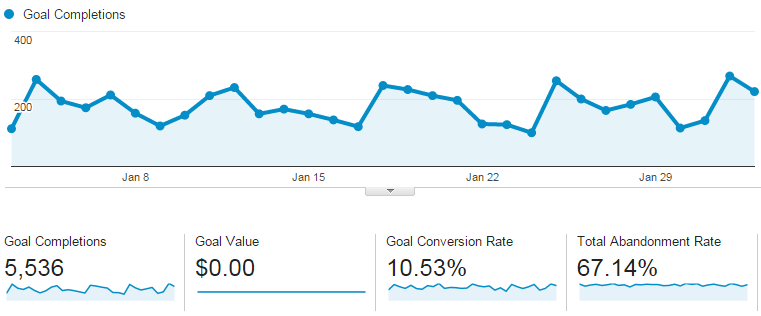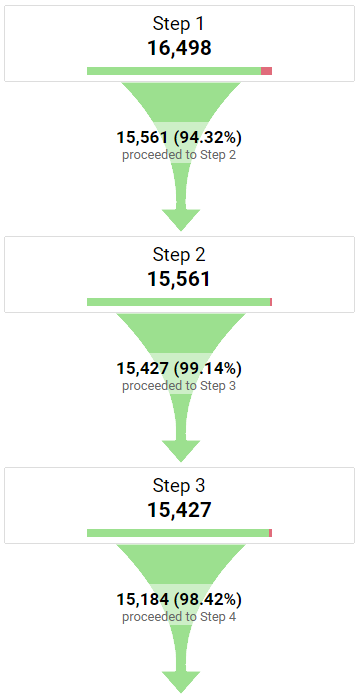Discovering What Data Is Google Analytics Goals Unable to Track
Discover the Limitations of Google Analytics Goals: Unveiling the Information Types That Remain Untrackable
As businesses significantly depend on data-driven decision-making, understanding the limitations of tools like Google Analytics ends up being paramount. While Google Analytics Goals deal important insights right into user communications, there exist data kinds that elude monitoring, presenting obstacles to a detailed understanding of customer habits.
Incomplete Individual Journey Tracking
Insufficient customer trip tracking within Google Analytics can impede the ability to accurately evaluate individual behavior. When the customer trip is not totally tracked, there are gaps in the data that protect against a thorough understanding of exactly how users engage with an internet site. This lack of insight can bring about missed out on chances for optimization and renovations to the user experience.
One common concern with incomplete individual trip tracking is the failure to see the full course that customers take before finishing a goal or leaving the website. Without this information, it is challenging to recognize where customers might be coming across barriers or friction factors that stop them from transforming. In addition, insufficient tracking can cover the influence of particular marketing initiatives or internet site adjustments on user actions.
To resolve this constraint, it is critical to establish appropriate tracking devices within Google Analytics to catch the whole individual trip. This might involve establishing event monitoring, objective funnels, or making use of devices like Google Tag Manager to guarantee that no vital interactions go unrecorded. By getting a comprehensive sight of the customer trip, website owners can make even more enlightened choices to boost user interaction and drive conversions.
Acknowledgment Challenges
Browsing through acknowledgment difficulties in Google Analytics needs a comprehensive understanding of just how various touchpoints add to the total conversion process. Attribution difficulties occur from the intricacy of modern-day client trips, where customers communicate with numerous networks prior to converting. Google Analytics supplies numerous acknowledgment versions like very first touch, last touch, and direct, each supplying a various viewpoint on how credit report is appointed to touchpoints along the conversion path. These versions might not always properly show the real influence of each touchpoint on the conversion.
One usual acknowledgment obstacle is the problem in associating conversions to the proper source, especially in instances where users interact with numerous networks prior to converting. Furthermore, cross-device tracking positions another acknowledgment difficulty, as customers usually switch in between gadgets throughout their trip, making it challenging to track their interactions seamlessly.
Offline Conversions
Provided the difficulties related to attributing conversions accurately in online channels, the dimension of offline conversions presents a substantial possibility for marketing experts seeking a much more extensive understanding of their customers' journey. Offline conversions refer to activities that clients take in the real world, such as making acquisitions in brick-and-mortar stores or over the phone, participating in occasions, try this out or engaging with published products - what data is google analytics goals unable to track. These conversions are crucial for organizations that run both online and offline, as they provide important understandings right into the efficiency of advertising campaigns throughout various touchpoints
Tracking offline conversions typically posed a substantial difficulty for online marketers, as it was challenging to link these actions back to specific on the internet interactions accurately. With developments in innovation, such as the combination of CRM systems, distinct identifiers, and promo code codes, organizations can currently connect the space between online and offline data to acquire a more alternative view of client actions. By properly measuring offline conversions, online marketers can maximize their approaches, allocate resources a lot more successfully, and ultimately improve the overall consumer experience.
Cross-Device Tracking
Cross-device tracking plays a crucial duty in recognizing the interconnected nature of customers' digital communications across several gadgets. In today's omnichannel globe, where customers effortlessly switch between smartphones, tablet computers, and desktops, tracking their actions across these gadgets is important for marketers to gain a detailed view of their client trip.

In addition, privacy issues and guidelines such as GDPR and CCPA have additionally difficult cross-device monitoring. With individuals requiring even more control over their data and boosted restrictions on tracking technologies, online marketers must locate privacy-compliant and innovative methods to link customer interactions throughout tools.
Dynamic Content Interaction
Recognizing user engagement with dynamic material is essential in maximizing electronic advertising and marketing techniques for enhanced target market communication. Dynamic web content refers to website components that alter based upon customer habits, choices, or various other factors, using a tailored experience. Tracking individual communications with dynamic content presents obstacles for traditional analytics tools like Google Analytics.
While Google Analytics can track fundamental communications like clicks and page sights, it might battle to catch more nuanced involvements within vibrant material. what data is google analytics goals unable to track. Metrics such as time spent on certain dynamic aspects, float actions, or interactions within pop-ups are commonly not easily measurable making use of conventional tracking approaches. This restriction prevents marketing professionals' capability to fully understand how users are engaging with dynamic content and tailor their techniques appropriately

Verdict
To conclude, Google Analytics objectives have constraints in tracking insufficient customer journeys, connecting conversions precisely, recording offline conversions, tracking cross-device communications, and useful link gauging vibrant material involvement. These Clicking Here constraints highlight the significance of exploring extra tracking approaches and devices to acquire a more comprehensive understanding of individual habits and conversions past what Google Analytics can offer.
While Google Analytics Goals deal beneficial insights right into user communications, there exist information kinds that avoid monitoring, posturing obstacles to a comprehensive understanding of user actions.Insufficient individual journey tracking within Google Analytics can prevent the capacity to precisely examine individual behavior. When the customer trip is not completely tracked, there are spaces in the data that avoid a thorough understanding of just how individuals communicate with a site.One common concern with insufficient individual journey monitoring is the failure to see the full course that customers take previously finishing a goal or leaving the website. By obtaining a thorough sight of the individual trip, internet site owners can make even more educated choices to boost customer engagement and drive conversions.